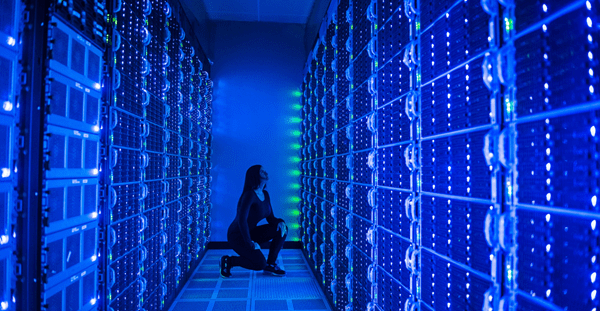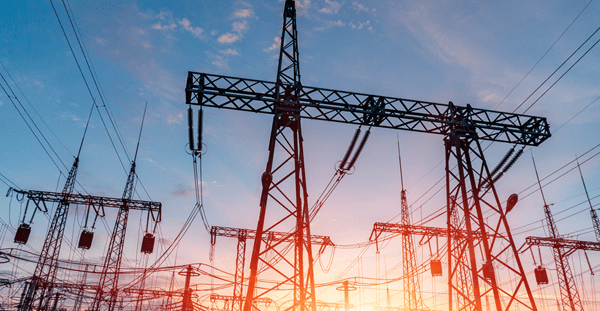Previously, we looked at how liquid immersion cooling and smart environmental monitoring can make data centers more sustainable. Let’s now look at another option that’s currently available, Battery Energy Storage Systems (BESS), and why it can replace diesel generators, which are estimated to provide over 20 gigawatts of backup power globally in the data center industry today.
A possible game changer, BESS are fast, reliable and virtually maintenance-free; they require no fuel storage, are quiet, environmentally friendly, and can last for more than 20 years. Diesel generators, in contrast, struggle with increasingly regulated emissions, noise and fuel storage, and they need regular testing and frequent maintenance to ensure reliability.
Alternatives to diesel generators: promoting the use of BESS
In September 2019, during the Critical Facilities Summit in Dallas, I shared my insights about the benefits of replacing diesel generators with BESS in a presentation I co-presented titled “Backup Power: New Approaches via UPS, Energy Storage & EV Technologies”.
We discussed how diesel generators, despite their well-documented long-term negative impacts on the environment, have been providing backup power to critical facilities for decades. Thankfully, improvements in the cost and performance of rectifiers and chargers, inverters, high-speed power switching, control systems and, more specifically, new battery technologies mean we now have viable alternatives to these fossil fuel-powered machines.
Dealing with power outages
Data centers and other critical facilities require long-term backup power, sometimes for days at a time, so if we’re to have BESS as viable alternatives to diesel generators, then we must ensure their longevity. Currently, the typical designs of BESS limit their ability to provide backup power for no more than four hours unless combined with more traditional backup systems.
Fortunately, most non-major event outages are less than two hours. The average US electricity customer experienced just over eight hours of power interruptions in 2020. Moreover, the best states average between 44 and 101 minutes for individual outages, while the worst ones average considerably more, ranging from 29 hours to a whopping 60 hours.
By anticipating an outage that lasts for more than two hours, we can engage a hybrid configuration. We can use the more traditional diesel or natural gas generators early enough to allow us to recharge the BESS. We could then extend the four-hour window to perhaps eight hours or more, covering an even greater percentage of annual outages.
Supposing an outage lasted more than eight hours, as might be the case in a major natural disaster, we could implement load shedding protocols to extend the eight hours even further or use remote backup facilities. This way, by using a hybrid configuration, we can substantially reduce greenhouse gas emissions in our environment.
This may not always be the case, though, as rapid breakthroughs in battery technology are extending the duration of BESS, and this may phase out hybrid configurations. An example is California Community Power’s first eight-hour, long-duration lithium-ion battery energy storage resource project, which will have a 69 MW output and 552 MWh capacity (8 hours) operational by 2026.
Liquid metal batteries for future energy storage
While lithium-ion batteries dominate the BESS industry, their pros and cons have been discussed and debated repeatedly. They’re expensive, don’t like being fully charged or discharged, are extremely sensitive to high temperatures and are inherently flammable.
Liquid metal battery systems are promising and may soon replace lithium-ion in larger-scale BESS installations. Antimony and calcium alloy are combined with a solid salt electrolyte inside a sealed, insulated and positively polarized stainless-steel case with a negative terminal at the top.
The contents are then heated to 932 ˚F (500 ˚C), at which point the metals and electrolyte become molten. The discharge process generates its own heat, eliminating the need for an external heat source. With an efficiency of 80% and the ability to undergo tens of thousands of charge and discharge cycles with little to no degradation or drop in efficiency, liquid metal batteries easily outperform their lithium-ion counterparts.
Unlike lithium-ion batteries, liquid metal batteries’ high operating temperature does not require cooling, making them suitable for any climate. As far as safety goes, liquid metal batteries have no issues compared to those plaguing lithium-ion batteries.
American startup company Ambri is a major player in the spread of this technology and has the potential to revolutionize BESS and the transition to a more sustainable energy system. Massachusetts Institute of Technology professor of materials chemistry Donald Sadowa established the company, which has Microsoft founder Bill Gates as a major supporter and investor through his Breakthrough Energy Ventures fund. Other investors include Khosla Ventures and TotalEnergies.
In May 2021, Ambri teamed up with data center provider Terrascale to provide 250 MWh of renewable energy battery storage for the latter’s Energos Reno project. And in September 2022, Microsoft announced it had installed Ambri-manufactured high-temperature liquid metal batteries for backing up one of their data centers, but the capacity and location were not disclosed.
Green data center: pushing for sustainability
Changes can be made so that the data center industry will be able to drive meaningful change on global warming and climate change issues. In fact, some of the biggest technology firms have already made moves to make their data centers more sustainable.
In July 2020, Microsoft announced that it would eliminate its reliance on diesel fuel by the year 2030. In December of that same year, Google announced that it would be using large BESS to replace the diesel generators at one of its data centers in Belgium. Meta also announced in September 2022 the formation of a consortium to measure the emissions benefits of using large BESS.
As we continue moving toward achieving our sustainability goals, liquid immersion cooling, smart environmental monitoring and BESS are just a few environmentally friendly data center trends to keep an eye on as we shift toward green data centers.
Talk to one of our experts
For more insights about topics such as data centers, other critical facilities and sustainability, as well as projects, RFQs and RFPs, get in touch with our experts.




